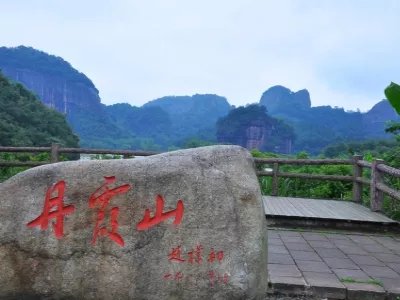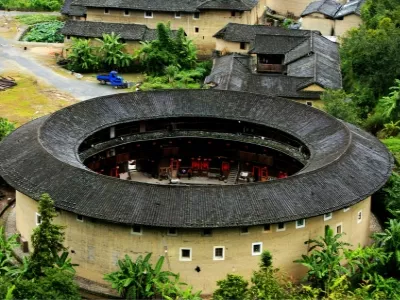Nicknamed "Zhan", Zhanjiang was once called "Kwangchouwan" and known as the "Harbor City". Comprised of a peninsula and over 30 islands, it is embraced by two blue bays – Zhanjiang Bay and Leizhou Bay. Islands like Donghai, Xiedao, and Nansan dot its harbors, creating a pattern of "one bay, many shores".
Zhanjiang is an ecological bay city where "the sea lies amidst the city, the city amidst the sea, islands stand within the city". It occupies the southernmost tip of mainland China, including the entire Leizhou Peninsula and areas north of it.
Zhanjiang borders the South China Sea to the east and overlooks Hainan Island across the Qiongzhou Strait to the south. It adjoins Guangxi Province to the west and the cities of Maoming and Yangjiang within Guangdong Province to the northeast.
The city administers the county-level cities of Wuchuan, Leizhou, and Lianjiang, as well as Xuwen County, Suixi County, and 5 districts - Chikan, Xiashan, Potou, Mazhang, and Zhanjiang Economic and Technological Development Zone.
Consumption level
Shantou has a relatively affordable cost of living and travel. Budget hotels range from 100-200RMB per night. Meals at local restaurants normally cost around 20RMB per person.
To maximize your budget, stay in express business hotels located near top attractions like Chen Cihong Memorial Hall and Nan'ao Island. Use public buses, walking, or taxis to get around for just a few RMB per ride. Enjoy local delicacies like Teochew-style crab soup dumplings and cold sesame noodles from small eateries.
By opting for budget accommodations, getting around via public transit and foot, and sampling inexpensive food stalls, travelers can immerse themselves in Shantou's mix of culture and coastal scenery without overspending. Focus your time and money on just a couple highlights each day. With good planning, you can experience Shantou's unique Teochew heritage for around 200RMB or less per day.
Donghai Island Dragon Dance
Donghai Island Dragon Dance in Zhanjiang
The Donghai Island dragon dance is an ancient Han Chinese folk dance dating back over 300 years to the late Ming and early Qing dynasties. Hailed as "unparalleled in the Orient," large troupes of 50-100 or even hundreds of dancers bring the dragon to life.
On the 15th day of the 8th lunar month, the streets of Donghai Island come alive with performances for 3 consecutive nights. Dancers holding poles carved with dragon heads, tails and body sections synchronize their steps to form the shape of the mythical creature. The dragon winds through streets and alleys in an impressive spectacle.
The traditional dance has been passed down for generations on Donghai Island. Its unique costumes, music and choreography showcase cultural heritage. Visitors can admire the technical skills and teamwork as the twisting, undulating dragon dances under the Mid-Autumn moon.
Location: Donghai Island, Zhanjiang, Guangdong
Time: 15th day of 8th lunar month
Wuchuan Piaose
Wu Chuan Piaose Folk Art in Zhanjiang
The ancient town of Wu Chuan is renowned as a "town of art" in Guangdong Province, especially for its folk arts of piaose, mud sculptures, and flower bridges. The tradition of piaose coloring originated from the temple parades of the late Qing dynasty.
Piaose features children ages 2-6 dressed up in colorful artistic costumes and balances atop tall poles on floating platforms. Up to a dozen children can stand on each platform, which is propelled through the streets by costumed performers below. The children dance playfully high in the air, appearing to float effortlessly.
During the Lantern Festival before and after the 15th day of the first lunar month, Wu Chuan holds piaose parades and performances. Visitors can watch the dazzling sight of fluttering costumes and nimble movements from the talented local children. Piaose showcases Wu Chuan's intangible cultural heritage in a lively folk celebration.
Location: Wu Chuan, Zhanjiang, Guangdong
Time: Around Lantern Festival
Wuchuan Huaqiao
Huaqiao Flower Bridge in Wuchuan, Zhanjiang
During the Lantern Festival on the 15th night of the first lunar month, the Huaqiao Flower Bridge in the ancient town of Wuchuan comes alive with color and light. Villagers from Gehai decorate the scenic bridge over the Meijiang River with elaborate flower arrangements and glowing lanterns.
From afar, the bridge appears as a fiery dragon spanning the river. Up close, the railings brim with fresh blooms and paper lanterns hang overhead between scrolls, paintings and colorful streamers. Reflected in the rippling water below, it is a vision of beauty and romance.
The vibrant display transforms Huaqiao into a flowery rainbow passageway during this significant festival. Visitors can stroll the bridge, taking in the creative decorations and festive atmosphere. Huaqiao Flower Bridge is a highlight of Wuchuan's cultural traditions and Lunar New Year celebrations. The radiant scene captures the spirit of the Chinese Lantern Festival.
Location: Wuchuan, Zhanjiang, Guangdong
Time: 15th day of the 1st lunar month
Best Travel Time
The climate in Zhanjiang is characterized by year-round high temperatures, frequent typhoons, rainy summers and autumn, and dry winters and spring. Generally, it will be cooler only after November in Zhanjiang, making it the most suitable place to travel.Dressing Guidelines
Zhanjiang Clothing Recommendations
Zhanjiang's summers are hot, so wear short sleeves and shirts. In winter, add a long coat for warmth. Remember sun protection and hydration in the sunny seasons.
Bringing rain gear is advised in summer and fall, Zhanjiang's rainiest seasons.
Zhanjiang has a tropical monsoon climate with humid summers and mild winters. Pack light, breathable clothing for hot and humid summers. Carry umbrellas and rain jackets in case of summer downpours. Cooler winters require long sleeves and jackets for warmth during the day and at night. Checking weather forecasts will ensure you dress prepared for Zhanjiang's tropical climate. With proper attire, you’ll stay comfortable exploring this coastal Chinese city.
Ships
Zhanjiang has well-developed water transportation with numerous seaports and ferry terminals around the city.
Some of the main passenger ferry ports in Zhanjiang include Xiashan Port, Donghai Island Port, and Wuchuan Port. These operate regular ferry routes to Hainan Island and neighboring cities like Beihai and Guangzhou.
The ferries provide a leisurely way to travel along the coastal region. Journey times are generally 2-5 hours depending on your destination. Tickets can be purchased at the ferry terminal before departure. Schedules run frequently but are reduced during low seasons.
For travelers going to Hainan Island or taking a multi-city trip around the Guangdong coast, ferries present a scenic alternative to flying. Keep in mind that ferry terminals are located outside Zhanjiang's city center so you'll need to arrange ongoing transport. Always check schedules ahead of time and arrive early to exchange tickets and board.
With its extensive port system, water transportation has long played an important role in Zhanjiang's development and remains a convenient option for both locals and visitors. Taking the ferry lets you enjoy beautiful sea views along the way.
Medical treatment
Here is some helpful information about medical care in Zhanjiang, China for an English travel website:Medical Care in ZhanjiangZhanjiang has several top-rated Tier 3 hospitals, including Guangdong Medical University Affiliated Hospital, Zhanjiang First Traditional Chinese Medicine Hospital, and Zhanjiang Central People's Hospital. There are also many conveniently located 24-hour pharmacies throughout the city for purchasing medication or over-the-counter remedies.Some major hospitals in Zhanjiang include:Guangdong Medical University Affiliated HospitalPhone: 0759-2387513, 2387528Zhanjiang Second People's Hospital Phone: 0759-2372160, 2372200Zhanjiang Second Traditional Chinese Medicine HospitalPhone: 0759-2209841, 2221753, 2283540With reputable hospitals, English-speaking staff, and easily accessible 24/7 pharmacies, travelers can feel confident getting medical treatment if needed in Zhanjiang. Be sure to travel with proper health insurance and documentation to facilitate any necessary care.Safety considerations
When at crowded places like train stations, bus terminals, and metro stations, keep a close eye on your belongings to prevent theft. Areas with high tourist traffic like Tiananmen Square also attract scammers, so tourists should be wary of unlicensed guides demanding money upfront. Avoid handing over any cash to solicitations on the street. Use registered taxi companies like the red Beijing taxis whenever possible. Keep valuables secured and hidden, avoid carrying large amounts of cash, and be alert in public transportation hubs and tourist sites. When needing assistance, go to authorized help points like the Beijing Tourist Information booths rather than individuals roaming the streets. Beijing is a generally safe city if simple precautions are taken. Report any incidents or suspicious activities immediately to the nearest police officer. They can also provide directions and other help. Enjoy sightseeing, but remain aware of the surroundings.













